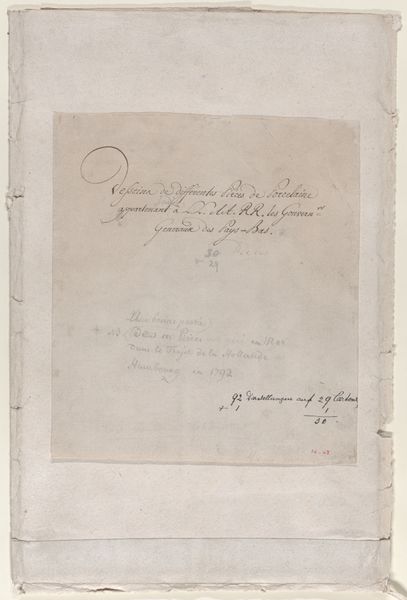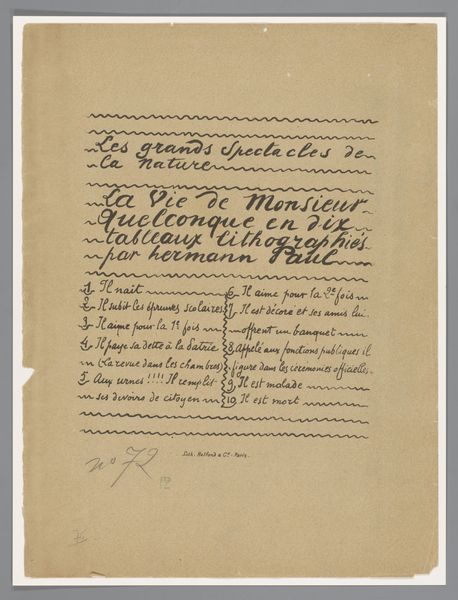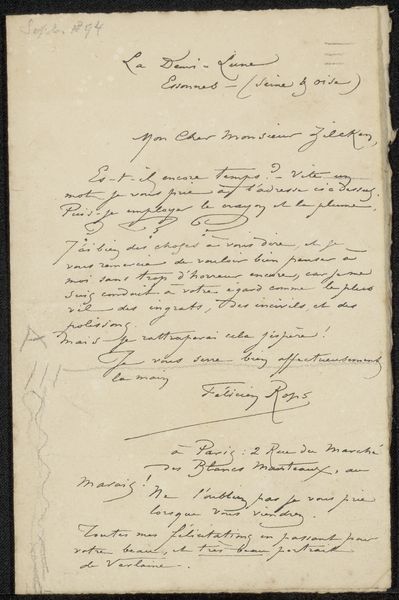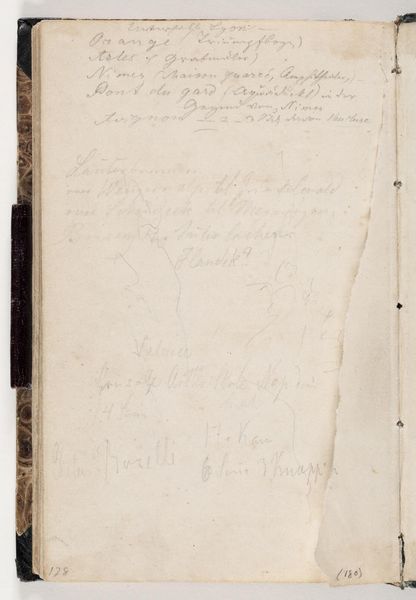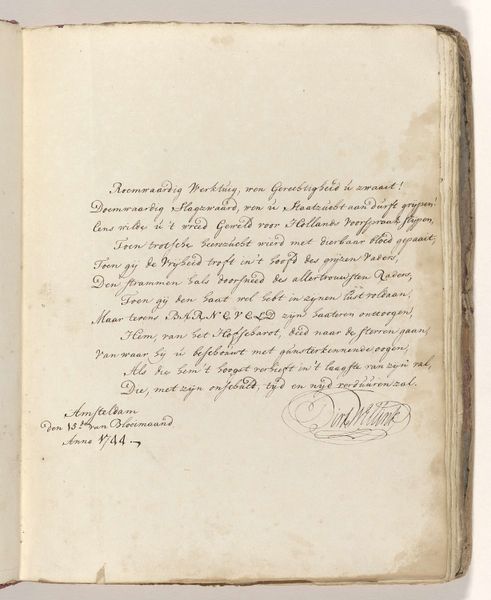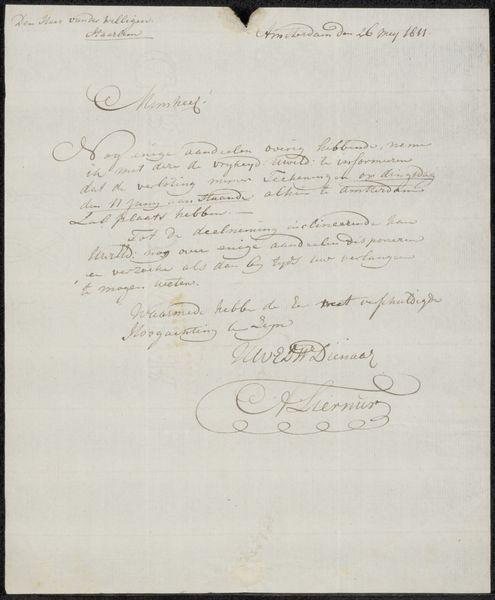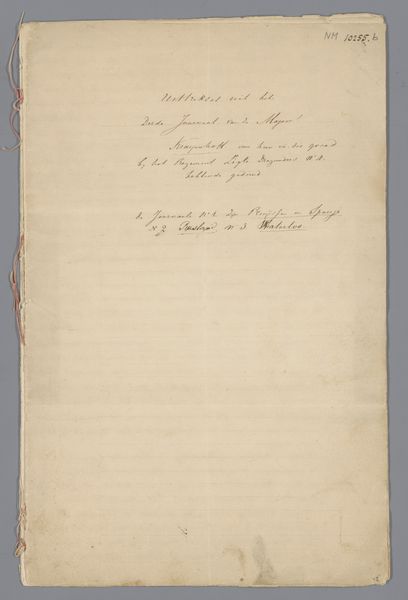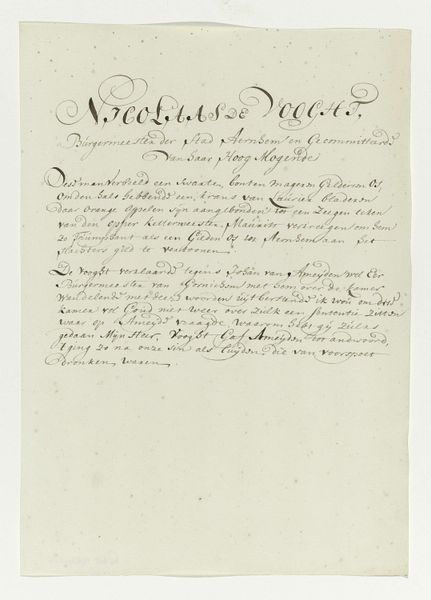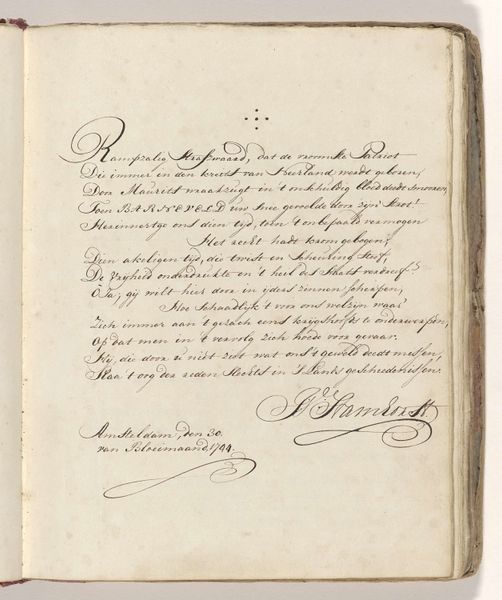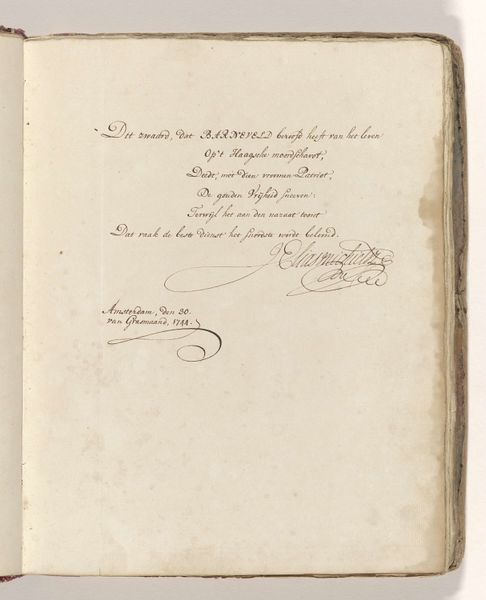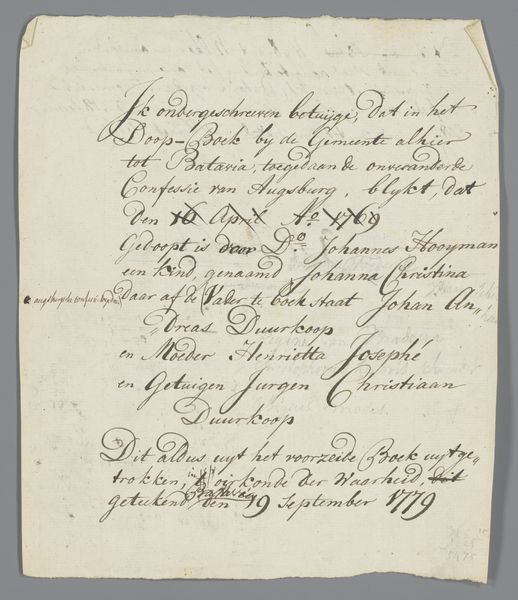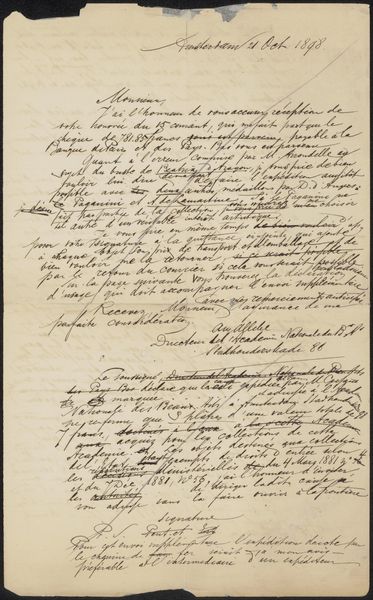
drawing, print, paper, ink
drawing
narrative-art
figuration
paper
ink
symbolism
Dimensions: 374 × 509 mm (full sheet); 374 × 256 mm (folded sheet); 103 × 149 mm (headpiece)
Copyright: Public Domain
Editor: Here we have Paul Gauguin's "Le sourire: Journal méchant," from 1900, a print in ink on paper. Looking at this, the contrast between the block print and the handwritten text creates a fascinating juxtaposition. What strikes you most about the visual structure? Curator: Precisely. Notice how the composition is divided into distinct registers. The upper register presents bold, almost crude, linework characteristic of a woodcut aesthetic. The directness of line contrasts sharply with the delicate script of the text below. Semiotically, we can view the upper portion as a signifier, perhaps representing Gauguin's public artistic persona, while the handwritten text could suggest a more intimate, private sphere of expression. Editor: So you're saying that the shift in style tells a story in itself? The rough versus refined suggests a contrast in the artist's persona? Curator: Indeed. Consider also how the heavy, almost oppressive black ink in the block print is relieved by the relative airiness of the cursive script. Do you see a relationship between these two sections, in terms of the balance between textual and symbolic elements? Is one more successful than the other? Editor: I find the top block quite powerful visually, but the lower half, with the handwritten element, seems much more cryptic to me. Perhaps they’re intended to be unbalanced. Curator: The ‘unbalanced’ relationship may have been precisely Gauguin’s intent, thus conveying deeper contextual nuances, rather than visual harmonies. How do you now interpret Gauguin’s narrative choices after examining the individual composition? Editor: That's fascinating. Considering both elements in concert gives the work so much more meaning, both intellectually and emotionally! I never would have considered those relationships independently. Curator: A successful visual and theoretical decoding lies in these independent relationships, and in understanding the interplay of art history with the artist's biography.
Comments
No comments
Be the first to comment and join the conversation on the ultimate creative platform.
